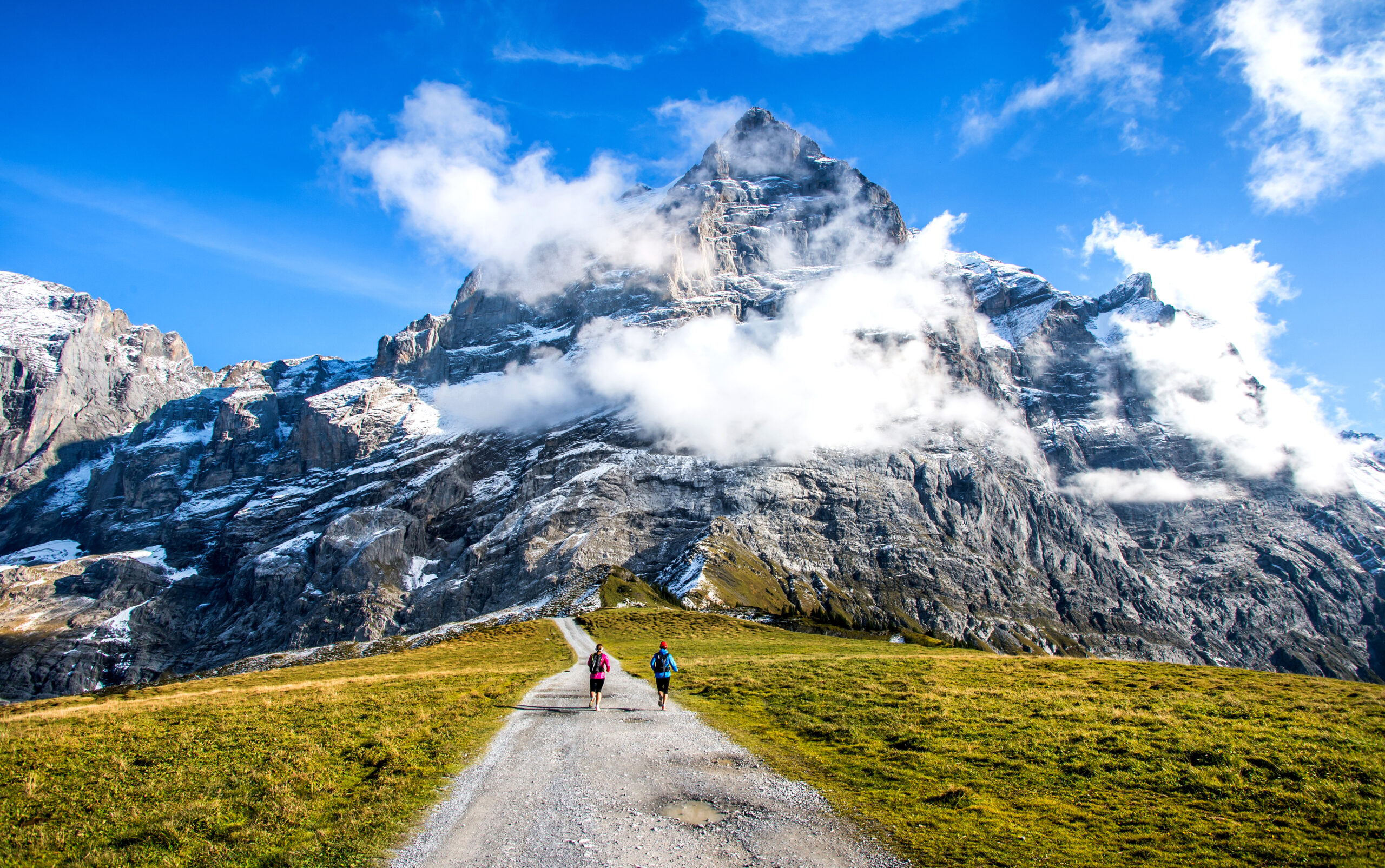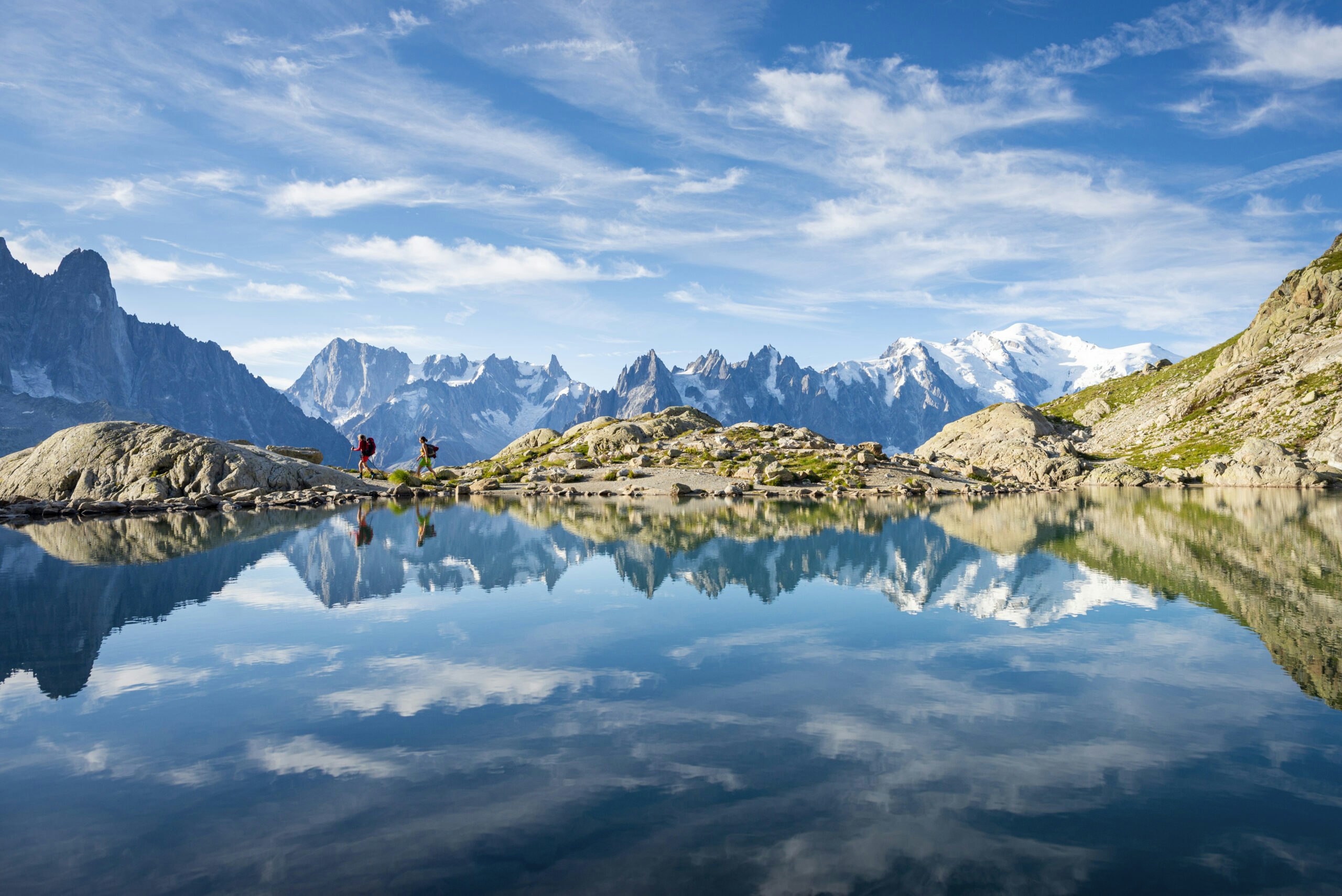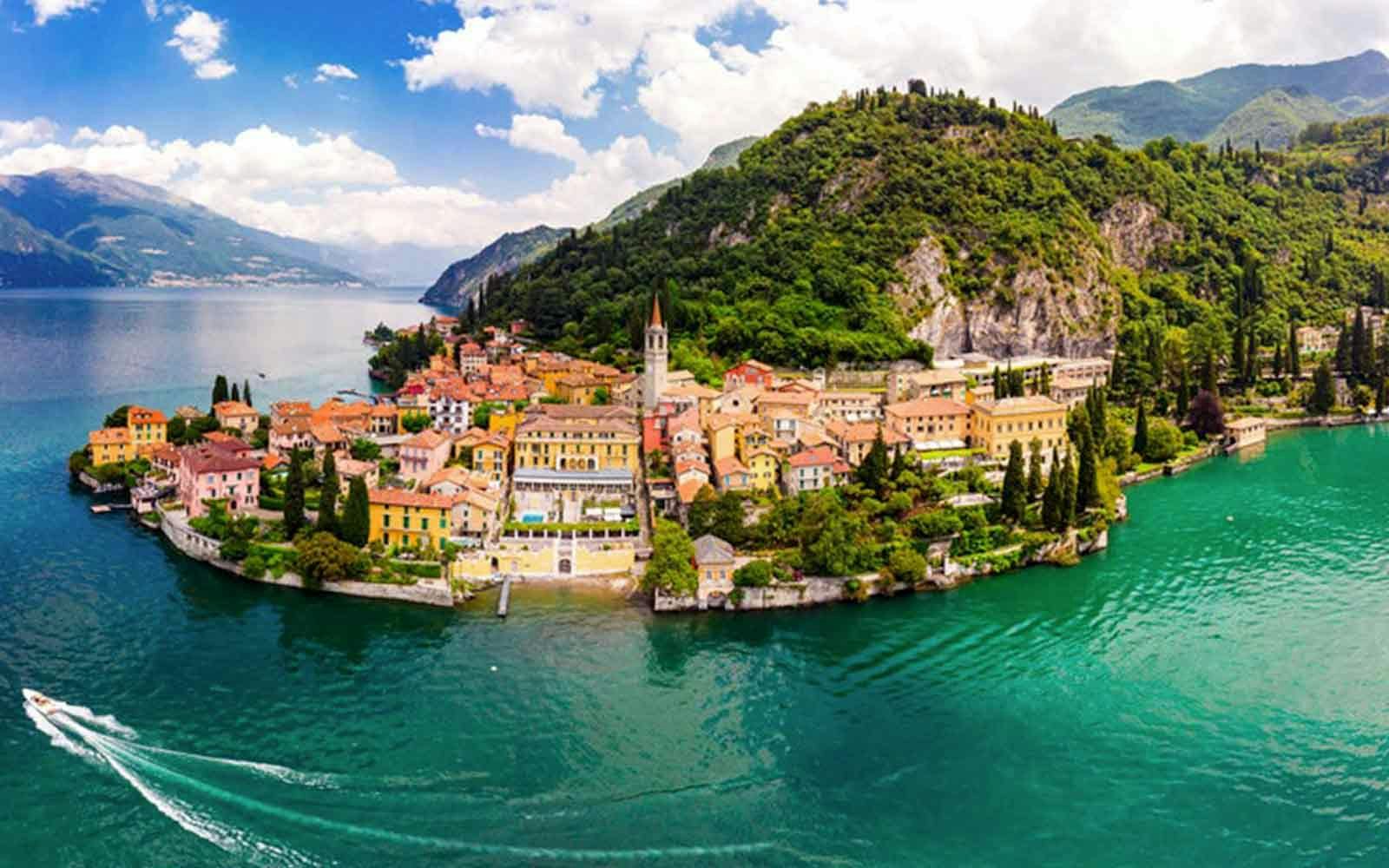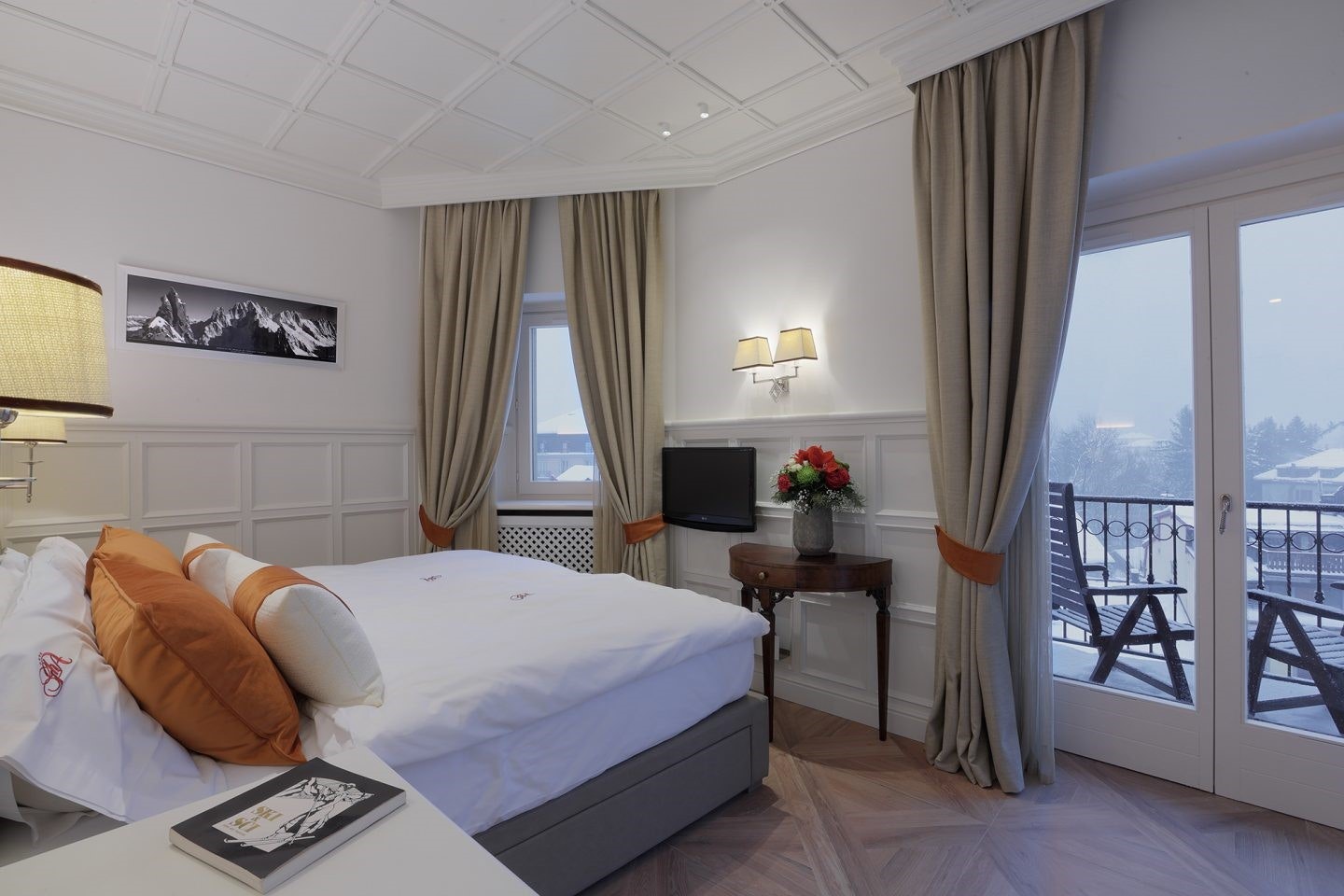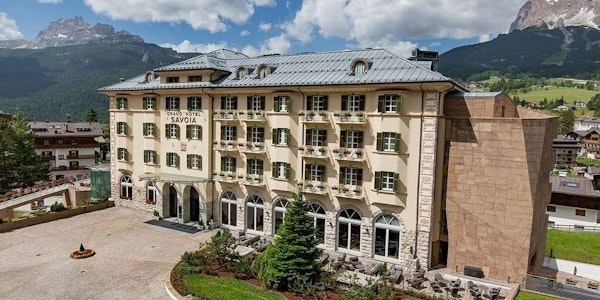Discover Switzerland
There’s a reason why Switzerland is one of the happiest nations in the world. Located in Central Europe with France, Italy, and Germany as its neighbors, Switzerland has one of Europe’s most beautiful natural settings. With alpine lakes, mountain views, and stretches of green pastures, it’s no wonder the population is so happy. Outdoor activities are the major pastime, with hiking in the summer and skiing in the winter being its most popular activities.
Switzerland is more than just gorgeous views, though. Charming cities and villages sit in valleys, and iconic Swiss chalets line mountain cliffs, offering visitors the opportunity to glimpse the past in architecture that spans the Roman era to the Post-Modern. Broken up into 26 cantons, or regions, each area of Switzerland has its own personality—and each also has a primary language they speak depending on where the canon sits in the country. In-between alpine hikes, fuel up with hearty Swiss fare that’ll keep you going all the way to the summit of one of Switzerland’s mighty peaks or for speedy skiing down the Matterhorn. Whatever your interest, Switzerland will not only keep you active but will leave you awestruck at the natural landscape around you.
Planning a trip to Switzerland? Read on to find out when to visit, what to do, and more to make your vacation unforgettable.
What is the best time to visit Switzerland?
As a four-season destination, Switzerland is best planned around what you want to do. If hiking or biking the Alps is top of list, then May—August is when weather is at its best, with clear blue skies, warm days, and green fields and forests. This is also a great time to explore mountain villages, glaciers, and climb the mighty Matterhorn. The months of September—October bring in the cooler temps. This period is when the crowds are smaller, leaves are turning, and yet the weather is still cooperating so hiking higher altitudes is still accessible. For those who are looking to participate in skiing and other winter sports, November—March are the best months, with January and February having the best snow conditions.
What is the best way to get to Switzerland?
From the mainland United States, there are multiple airports and airlines that fly direct to both Zurich and Geneva Airport. The most popular routes are from New York, Boston, Philadelphia, Washington DC, Chicago, San Francisco, Los Angeles, and Houston, with American, United, and Delta being the largest carriers to fly direct. Flying from the east coast will take about eight hours, while flight times from the west coast are about 11-12 hours.
How to get around in Switzerland?
Switzerland has an excellent train system that includes buses, trams, and trains that will take you to most of the towns and sites throughout the country, including remote mountain villages. You can easily rent a car, but why bother when the public system is so efficient, and you can sit back and enjoy the extraordinary views from a panoramic train (of which there are several). For those up-in-the-clouds views, Switzerland will whisk you up high via cable cars and funiculars that offer views worthy of the summit you’re reaching. Boats are available for lake destinations, and biking is also popular, with plenty of cycling routes throughout the country.
How many days should I spend in Switzerland?
To see the major sites, villages and towns, and experience iconic activities like hiking or skiing in the Alps, 10 days is the perfect amount of time to explore Switzerland.
Do I need a visa to visit Switzerland?
US citizens do not need a visa for stays up to 90 days. Citizens of other countries should check with their local embassy for entry requirements.
What are the top 5 places to visit in Switzerland?
1. The Swiss Alps
The Swiss Alps are a must when visiting Switzerland, perfect for hikers, skiers, photographers, and those interested in seeing some of Europe’s most gorgeous scenery, including Alpine villages, snow-covered peaks, and mountain waterfalls. Its 48 mountain peaks are the highest amongst the Alps and include iconic peaks like Matterhorn and Mont Blanc, and what is considered “the top of Europe,” the Jungfraujoch, which is the highest train station in Europe and a UNESCO World Heritage Site. Travelers on the train will enjoy stunning alpine views but it’s the summit that really impresses. Here, you can view the Aletsch Glacier, the largest glacier in the Alps, enjoy amazing views of the Alps from the Sphinx Observation Deck, and have the opportunity to explore ice tunnels. The Swiss Alps have 40,000 miles of hiking trails, making them one of the most popular hiking areas in Europe. Some of the area’s most beautiful trails include the Oeschinen Lake Trail near Interlaken, the trails in the beautiful Lauterbrunnen Valley, the Stäubifall trail, which leads to the impressive Stäubifall waterfall, and the trails that circle Mont Blanc. For the iconic Swiss chalet-style village experience, check out the alpine town of Lauterbrunnen, where you can hang glide over the valley it sits in, take a cable car to the Schilthorn Viewpoint, or visit one of the 72 waterfalls in the valley.
2. Lucerne

Considered by many to be Switzerland’s most beautiful city, Lucerne is situated in the Lucerne canton in the middle of the country. The city is known for its medieval architecture and its historical Old Town, but its position on the banks of Lake Lucere, surrounded by mountains, is its main draw. After spending time in Old Town, visitors will want to check out the 14th-century Chapel Bridge (which was rebuilt in the 90s because of a fire), a wooden footbridge that crosses the Reuss River. Another important bridge in town is the 15th-century Spreuer Bridge. Both bridges are populated with series of paintings, but the Chapel Bridge’s paintings of the Dance of Death—which were likely inspired by the Black Death that was ravaging Europe in the mid 1300—are worth checking out. The Jesuit church in town is one of the first Baroque churches in Switzerland and took over 200 years to complete. In-between historic sites, make sure to check out the many local artisans who have shops in town, offering plenty of traditional gifts to take back home.
3. Lake Geneva

The biggest lake in Switzerland and the largest lake in the Alps, Lake Geneva is home to one of the world’s biggest fountains, the 500-foot-high Jet d’Eau that sits in the middle of the lake. In Switzerland, its anchored by two main cities, Geneva and Lausanne, but 40% of the lake actually sits in France. This 45-mile-long lake has notable castles along its bank, including nearby Chillon Castle, Switzerland’s most visited historic building with approximately 350,000 visitors a year. Once the home of the Savoy from the 12th-16th centuries, the castle actually dates back to the 10th century and was built on an ancient Roman fort. It’s one of Europe’s best-preserved medieval castles and is the only medieval castle never to have been captured in a siege.
4. Zurich

Switzerland’s largest city, Zurich, is full of cultural experiences. Situated on Lake Zurich, the city is home to over 50 museums, plenty of art galleries, vibrant nightlife, and, of course, is surrounded by stunning scenery. Its medieval town square in the Altstadt district is lined with medieval houses, cafes, and shopping. For high-end shopping, Bahnhofstrasse is the street to visit. Full of designer brands, this mile-long stretch of shopping is worth the window shopping alone. One of its most recognized landmarks is the Fraumünster Church, which was founded in 853 AD, as well as the Baroque St. Peter’s Church and Grossmünster, a Romanesque-style Protestant cathedral in Old Town.
5. Zermatt

If visiting Switzerland for winter sports, Zermatt is where you want to be. Considered one of the best ski locations in the world, the area is known for its consistent and excellent snow conditions as well as being home to the mighty Mattergorn (which you can ski). The area has 125 miles of pistes, with runs for all experience levels, and is busiest in June—September when the climate is at its most pleasant. For the après skier, you can visit one of the three main mountains by cable car or hiking (Matterhorn, Gornergrat, and Rothurn), ride mountain carts (they’re like go-carts that you ride down the mountainside), trek one of the many hikes that surround the area, or just hang out in charming Zermatt with its Swiss chalets, car-free streets, and boutique shops.

What are the best Switzerland adventure tours?
1. Alps Chamonix & Zermatt Hiking Tour
Go deep into the heart of the Alps for an epic one-week mountain adventure amidst extraordinary natural beauty. From the hubs of Chamonix and Zermatt, you’ll enjoy perfectly paced day hikes with picture-postcard backdrops including the iconic Matterhorn—Switzerland’s most famous peak! Reach new heights on thrilling cog railways and follow scenic mountain trails, including the Tour du Mont Blanc. Be dazzled by the chic towns of the Swiss Riviera and relax in Lavey’s soothing thermal waters. At night, experience warm hospitality at charming hotels and raise a toast to your alpine adventure.
2. Alps Eiger to Matterhorn Trekking Tour
Trek through the Swiss Alps on an eight-day spectacular route that links the alpine gems of the Eiger (13,015′) in Grindelwald to the Matterhorn (14,692′) in Zermatt. Spanning Oberland, the “Land Above,” and the Valais, this is a delightful journey of contrasts. Hike between serene mountain pastures that echo with cowbells and the wilder, rockier landscapes where chamois and ibex roam. Soak up the Bernese and Pennine Alps, staying in villages like the picturesque Mürren, serene Kandersteg, and far-flung Bundalp. Discover quintessential Switzerland with its soaring mountains, green valleys, idyllic meadows, and flower-filled chalets that offer true alpine hospitality.
3. Alps Haute Route Trekking Tour
Experience the Haute Route or “High Road” of the Alps on this challenging 11-day itinerary designed for serious trekkers. The Haute Route connects Mont Blanc to the Matterhorn on one of the most spectacular hikes in all the Alps, showcasing majestic mountain passes, alpine pastures, glorious glaciers, and delightful alpine huts. Embrace the thrill of summiting ten passes in ten days, guided by top professional guides, and enjoy the comfort of warm hospitality at night in a string of charming alpine towns and villages.
4. Alps Tour de Monte Rosa Trekking Tour
Monte Rosa, “the Pink Mountain,” is the second-highest peak in both Western Europe and the Alps at 15,203 feet. Led by our expert hiking guides, embark on this adventure replete with conquests of majestic alpine peaks and passes. Starting in the village of Saas-Fee and finishing in Zermatt, at the foot of the Matterhorn, hike almost the complete circuit of the massif. Beneath cascading glaciers, through ancient hamlets and wildflower fields, take in vistas of Monte Rosa, and learn about Walser culture and tradition. Traveling through the Swiss canton of Valais to the Italian Piedmont and Valle d’Aosta, soak up heartfelt hospitality and enjoy restful nights at charming hotels.
5. Alps Tour du Mont Blanc Hiking Tour
Mont Blanc. Europe’s highest and most iconic peak. Spectacular. Immense. Dazzling. And undisputedly on every serious hiker’s must-do list. Hiking for 10 days through the heart of the Alps won’t just get your pulse rate up, it will open your eyes to some of the most breathtaking vistas on Earth. Starting in the alpine village of Les Houches, near Chamonix, you’ll hike the full 99 miles around Mont Blanc. Follow age-old trails past giant glaciers, beside secret mountain lakes, and through grassy meadows—and delight in jaw-dropping landscapes at every bend. Experience three countries, cultures, and cuisines. Visit fairy-tale hamlets and enjoy warm alpine hospitality from the comfort of mountain accommodations. For those short on time, we also have an 8-day express version.
6. Alps Tour du Mont Blanc Express Hiking Tour
Experience contrasts that surprise and stimulate on this express version of our classic Alps Tour du Mont Blanc hiking adventure. In just 8 days you’ll maximize opportunities for vigorous trekking, breathtaking scenery, and the coziest of Alpine hospitality. Follow mountain trails to soaring viewpoints and storybook villages—enjoy nuzzles from friendly Swiss cows on the way. Europe’s most iconic peak has inspired and drawn mountain lovers for centuries; our world-class itinerary and expert guides make it an endlessly inspiring journey for today’s hiking enthusiast.
7. Alps Village to Village Hiking Tour
Experience picturesque alpine hamlets and sweeping mountain vistas in Switzerland and France on this unforgettable hiking trilogy of the Alps. Tackle the legendary Eiger Trail at the foot of the Eiger’s notorious north face, which has challenged mountaineers for over a century. Traverse canyon trails to discover imposing views of the iconic Matterhorn, and complete your tour in Chamonix, where the majestic Mont Blanc looms over the charming town. From Grindelwald to Zermatt to Chamonix, this 10-day tour will inspire and challenge even the most seasoned hiker.
8. Italy & Switzerland Lake District Hiking Tour
Experience the extravagant beauty of Italy and Switzerland’s Lake District on this idyllic hiking adventure. Starting at Lake Orta, tucked in the foothills of the alpine chain, visit tiny San Giulio Island before heading to the top of Monte Mottarone (4,895′). Follow scenic paths through forests and meadows above Lake Maggiore and Lake Lugano and take the pretty Wayfarer’s Trail around Lake Como. Along the way, discover picturesque islands and the Mediterranean charm of lakeside towns like Bellagio, Varenna, and Orta San Giulio with its narrow cobblestone streets and pastel-washed houses. Savor hearty local gastronomy and sleep in the comfort of elegant 4-star hotels with stunning lake views.
Where are the best places to stay in Switzerland?
Accommodations in Switzerland vary depending on your budget and where you plan to stay. You can find everything from camping, hostels, and budget hotels to luxury resorts and apartments. B&Bs and traditional Swiss chalets can also be found throughout the country and make for a very Swiss experience. Airbnb is also an option in Switzerland, offering a variety of apartments and homes that might be better suited for families or large groups.
1. Hotel Belle Vista: Zermatt, Switzerland
Located close to the town of Westport, the elegant Westport Plaza Hotel features spacious rooms, with a Jacuzzi bath and separate shower in the en suite bathroom. Savor sophisticated European food at the Merlot Restaurant, take a quick break at the Plaza Bar over cocktails, indulge in one of Spa Sula’s massages or facials, or unwind in its thermal suite.
2. Hotel du Glacier: Arolla, Switzerland
The Hotel du Glacier enchants with its flower-laden balconies, stunning mountain panoramas, and Alpine chalet charm. Its snug wood-paneled rooms come with a private bath or shower, TV, and modern amenities. Enjoy all the wonders of the Swiss mountain village from the hotel’s sunny terrace and dine on delicious local fare in the restaurant.
3. Hotel Cristal: Grimentz, Switzerland
Perfectly located in the authentic Swiss Alpine village of Grimentz, Hotel Cristal offers a delightful stay in unforgettable surroundings. Its comfortable and spacious rooms are well-appointed with modern amenities, and also include an en-suite bathroom and balcony. The hotel’s Wellness studio includes a sauna, gym and massage treatments.
4. Hotel Glacier and Sporting-Champex: Champex-Lac, Switzerland
Interesting Things to know about Switzerland
- The 35-mile Gotthard Base Tunnel is the longest and deepest tunnel in the world. It runs through the Alps between Switzerland and Italy at a maximum depth of 7,500 feet. Since its opening in 2016, it has become an important route for cargo between southern and northern Europe—as a matter of fact, two-thirds of all rail cargo through the Alps goes via the tunnel.
- Although Switzerland is almost synonymous with the Alps, the Swiss Alps make up less than 15% of the Alps range. Austria has the highest percentage of the Alps at almost 30%.
- The average Swiss person eats 20 pounds of chocolate per year, making Switzerland the largest consumers of chocolate per capita in the world.
- The world’s largest and most powerful particle accelerator is in Geneva. The Large Hardron Collider is a 16-mile ring of magnets that pushes protons to the speed of light. This accelerator is useful for helping physicists understand how our universe developed and works today, including the origin of mass, dark matter, and antimatter.
- Switzerland’s largest festival is Fasnacht, a Carnivale-like celebration that usually begins the Thursday before Lent (or the Monday after Ash Wednesday in Basel). This 72-hour-long festival has received UNESCO World Heritage status and is when the country lets loose with costumes, parades, and masked balls. Different cities across Switzerland have a version of Fasnacht, with Fashnact Basel being its largest and most famous.
- The Swiss flag is square. Unlike other nations that have a rectangular flag, Switzerland’s red flag with a white cross is a square. In the early 19th century, the cantons of Switzerland unified under one military flag, which was square. That flag then became the basis for the country’s recognizable red and white cross flag.
- Switzerland has wired 3,000 bridges, roads, tunnels, and railways to be exploded to safeguard against enemy invasion, effectively locking the country up in an emergency with no easy way to get in. Additionally, by law, every citizen of Switzerland must have easy access to a bomb shelter. It is estimated that there are 300,000 bomb shelters in the country.
What is the language in Switzerland?
Switzerland has four official languages: German, French, Italian, and Romansch, with German being the most common language spoken. Depending on where you are traveling in Switzerland will dictate which language you’ll hear, but the closer you are to another country’s border, the likelihood you’ll hear that country’s language. English is also spoken by almost half the country.
What to eat in Switzerland?
Switzerland has a reputation for some of the world’s best chocolate, and rightly so. Swiss chocolate usually contains more milk, which makes it creamy and more smooth than American chocolate. Iconic Swiss chocolate brands include Toblerone (with the Matterhorn on its packaging), Lindt, and Teuscher, but no matter which brand of chocolate you get, you won’t be disappointed.
Cheeses are another Swiss specialty—there are more than 450 types of cheese produced in the country—with Gruyère, Sbrinz, Tête de Moine, and the nutty and sharp Appenzeller being some of the popular cheeses to try. Cheese fondue is a favorite across the country and is often made with melted Gruyère cheese. Other popular cheesy dishes include tartiflette (casserole of potatoes, cream, cheese, onions, and bacon), raclette (melted cheese over potatoes), malakoff (ball of fried cheese), and alplermagronen (a type of mac and cheese with potatoes and Gruyère cheese).
Dishes in Switzerland lean towards hearty alpine fare so expect to encounter the hearty bread Bergfuhrerbrot as well as dishes like rosti (grated potatoes like hashed browns or latkes), walliserteller (lunch board of meat and cheeses), zurcher geschnetzelte (veal cooked in white wine and cream), landjäger (semidried sausage), riz casimir (veal curry), and Basler Mehlsuppe (stew made with beef stock and browned flour).
What is the currency in Switzerland?
The official currency in Switzerland is the Swiss franc (CHF). Euros are also accepted in major cities, but as the country is not part of the European Union, don’t be surprised if you get change in Swiss francs.
What is the electricity in Switzerland?
The electrical current in Switzerland is 230 volts, 50 Hz. The plugs used in Switzerland are types C and J. US travelers will need a converter as US electronics are 110-120V (and use type A or B outlets). A good resource to see images of plug types is www.power-plugs-sockets.com.
What is the time zone in Switzerland?
The time in Switzerland is Central Europe Time (CET) and Central Europe Summer Time (CEST), both of which are six hours ahead of New York and nine hours ahead of Los Angeles.
What to wear in Switzerland?
Generally, the Swiss dress casually, but take it up a notch when in Zurich or Geneva, which lean towards more fashionable attire. Wear comfortable, breathable clothing to stay cool during the warm months. Wear layers for the colder mornings and evenings, and plan on shedding or adding layers as the sun rises, or while on hikes and alpine climbs. Sun protection is important so bring a hat, sunglasses, and sunscreen. Have hiking boots or other gear as needed for planned activities. For dinner, plan on wearing dressier clothes like a button-down shirt, nice jeans, or a dress, and some nice shoes.
